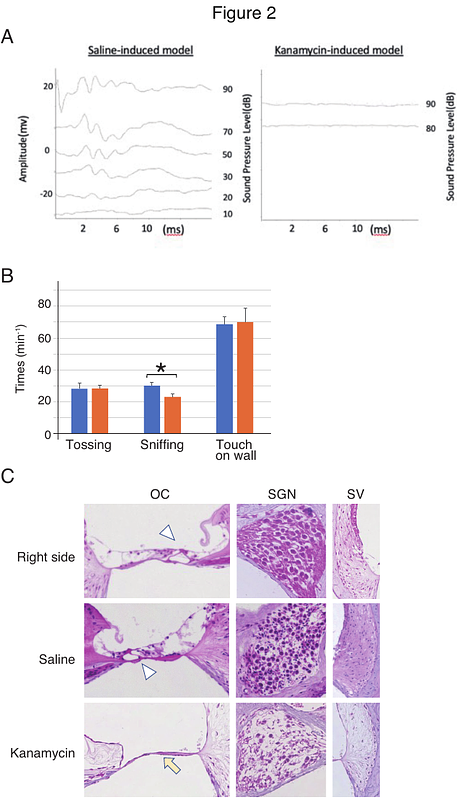Convolutional neural network model detected lasting behavioral changes in mouse with kanamycin-induced unilateral inner ear dysfunction

Convolutional neural network model detected lasting behavioral changes in mouse with kanamycin-induced unilateral inner ear dysfunction
Noda, M.; Mari, S. D.; Sajjaviriya, C.; Koshu, R.; Saito, C.; Ito, M.; Koshimizu, T.-a.
AbstractIn acute aminoglycoside ototoxicity to unilateral inner ear, physical abnormali- ties, such as nystagmus and postural alteration, are relieved within a few days by neural compensation. To examine exploratory behavior over an extended period, freely moving behavior of a mouse after unilateral kanamycin injection was recorded in a home-cage environment. A tail was excluded from deep learning-mediated object detection because of its delayed movement relative to the body. All detection results were confirmed by convolutional neural network classification model. In kanamycin- injected mice, total distance moved in 15 minutes increased at 3 days after surgery. Moreover, the injured mouse turned frequently toward healthy side up to 17 days after surgery. Tail suspension and twist toward healthy side induced fast rotation of trunk around longitudinal axis with dorsal bending after 14 days. Our analy- sis strategy employing deep learning is useful to evaluate neuronal compensatory process and screen a drug candidate with therapeutic potency.